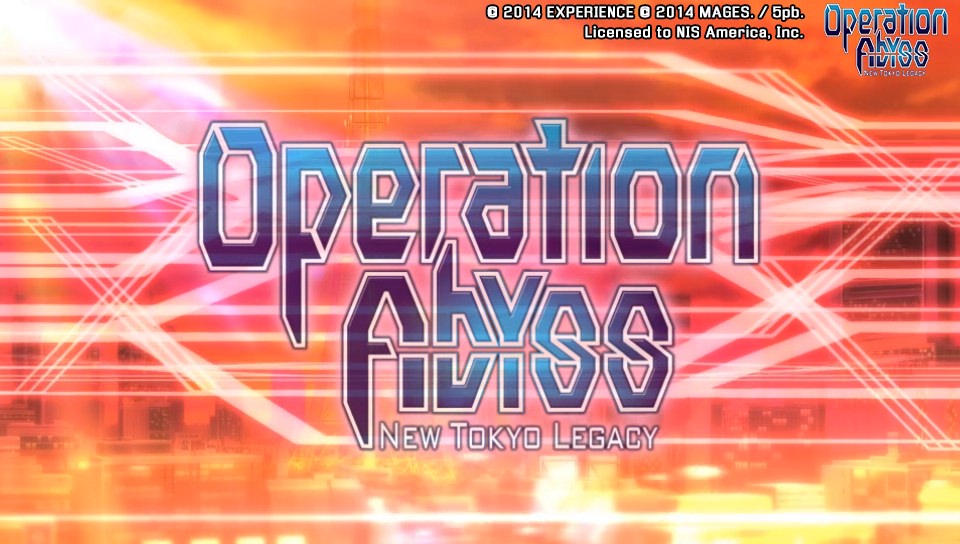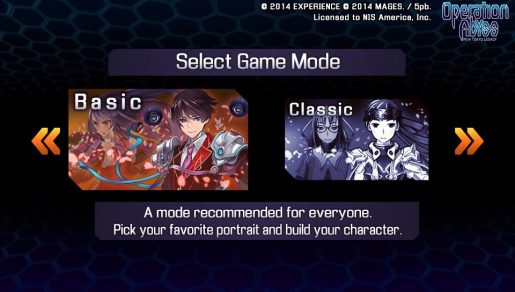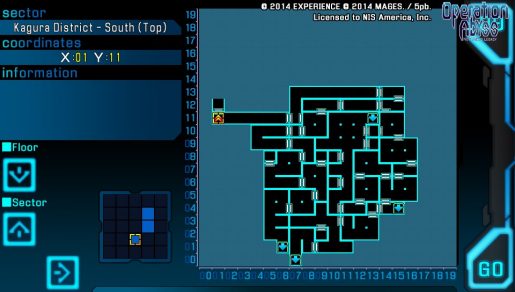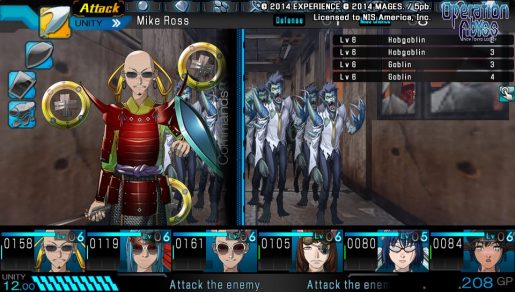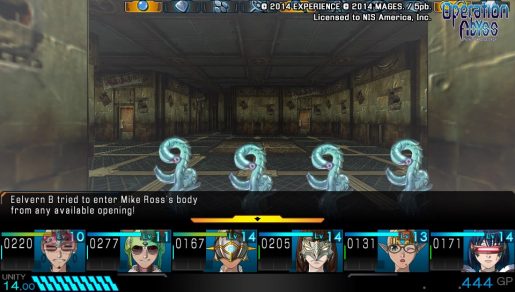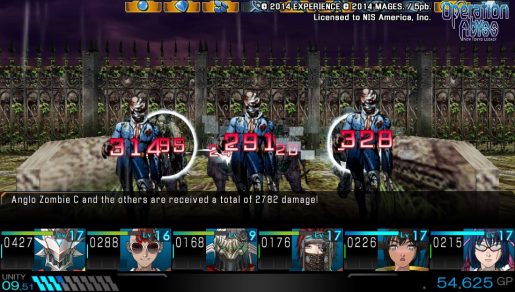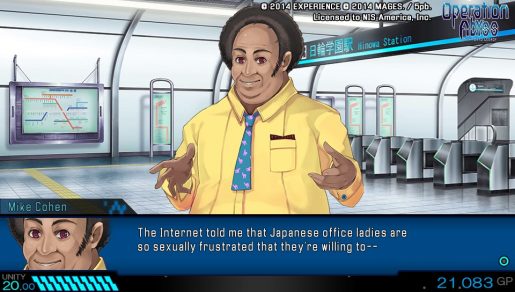At long last, the Generation Xth series of RPG’s has begun its transition out of Japan and into a more global audience. Operation Abyss: New Tokyo Legacy represents not just one, but rather the first two titles in the series thus far rolled together into one complete package for the Vita. Nearly seven years since the series debuted on PC, Operation Abyss finally brings the familiar Wizardry-style gridder RPG to a new audience. Is Operation Abyss: New Tokyo Legacy one you have to Realize in your collection, or is this a Hazard to stay away from?
Operation Abyss: New Tokyo Legacy is developed by Experience Inc. known recently for their other Vita exclusive RPG Demon Gaze. Both of these titles share a similar first-person dungeon crawling experience with multiple classes and faster turn-based combat than their contemporaries. Where Operation Abyss makes itself known from its successor (after all, these games have been around in Japan for upwards of seven years now) is the emphasis on modern day technology and setting.
Two options are available from the start of the game: Classic Mode and Basic Mode. These offer no difference to the game or story, save for character portraits. Classic Mode gives you a familiar term to early RPG enthusiasts: paper dolls. After creating a basic character appearance, any equipment or weapons you acquire are represented on the character model. In Basic Mode, customizable characters are instead replaced with drawn character portraits, with DLC portraits such as characters in swimwear to arrive at a later date.
In Operation Abyss, the main characters are those known as Xth, a class of high schoolers that try to balance the tasks of both maintaining high grades and the duties of their second job without arousing suspicion, and that of a highly secretive Japanese combat force that helps to protect the country from foul aberrations and serial killers. Much of the first job bears no meaning on the story, other than as a vector to help propel the story between lengthy assignments and missions.
The main Xth force have no name and really need no introduction. Similar to most other gridder RPGs, the main characters are purely those of the player’s choosing. There are usually some guidelines to follow, such as having a front line shield-user to take the bulk of the enmity from the rest of your party or a healer in the back row to keep everyone in peak combat performance. Operation Abyss (and Demon Gaze to a lesser extent) feel a little less flexible with how characters should be built towards their team. A unique class to the game is that of the Academic, a character that’s too soft for front-line attacking, without enough offensive spells to be used as a primary spellcaster. Instead, they’re useful for three main tasks: imbuing the party with permanent buffs that last until a trip back to town, identifying drops and loot, and lastly cheering the party on to refill their Unity Gauge (more on that later.)
For the most part, I stuck with the team I had created at the start of Operation Abyss: Knight, Warrior and Archer in the front; Magician, Healer, and Academic in the back row. By the time I reached the halfway point of the story, I had changed my Warrior into a Monk and my Magician into a Conjurer and Assassin before simply dropping them from my party in favor of a Samurai so that I could finally move my Archer into the back rows where she belonged.
One of my objections to both Generation Xth/Operation Abyss and Demon Gaze certainly presents itself into just how the party melds together. This could be seen as both a positive and negative aspect. It’s negative in the sense that some party builds just don’t feel effective and take far too much damage for no good reason without exploiting some of the game’s systems on a continual basis. On the other hand, it can be a positive in regards to simplifying the game’s difficulty curve while at the same time greatly increasing the player’s capabilities for auto battling and grinding efficiently. Take the Knight for example. They offer abilities that increase their damage and make them a viable front line attacker but their true use comes from skills such as Aegis. These skills both protect the party as a whole and redirect the enemy’s focus onto them, saving those hits that might otherwise take out a caster in one hit and instead get soaked up by the guy with the most defense in the party, mitigating what could’ve been 200-300 damage a swing into 1 or 2.
Another system that was quite easy to break during my playthrough was that of the Unity Gauge. These Unity skills are supposed to represent that the party has built up into a whole and can unleash into skills such as a fast-hitting attack that strikes every enemy on the field or, my usual go-to, a magical shield that further mitigates any possible damage that the party could take for that turn. Every attack the party makes increases the Unity Gauge by a small amount and it typically takes three or so turns to get the gauge back up to full. With the Brain Spire skill that an Academic learns at level 15, it’s possible to refill that gauge in only a single turn. This means turn after turn, you can keep up that damage barrier that trivializes most encounters that would otherwise prove troublesome with how quickly they could eviscerate your party.
Choosing not to use these skills seems to not be quite a viable option, as enemy strengths seemed skewed so high that straying from this repetitive task of filling and utilizing Unity Skills paired with keeping my Knight on 100% defensive duties could prove to be a disaster. I’ve seen this firsthand on a number of occasions where my party gets ambushed from behind, giving the enemy a free turn to do what they wish before my party can react. It can be quite frustrating to see your lesser armored party members get struck for upwards of 1,000 damage from a single attack when they only have 300-400 max health points at a given time. Couple that with the rarity and high cost of consumable resurrection items and you may find yourself having to make more trips back to the medical facility than should be considered fair.
As Operation Abyss: New Tokyo Legacy actually combines a pair of role playing titles from the Generation Xth series (Code Hazard and Code Breaker) into one complete package. The transition from one title to the next makes sense on paper: the first semester ends, vacation rolls around, and a second semester begins with the start of Code Breaker. Where this transition fails is with the arbitrary level cap of 15 until you finish the first semester. For a player like myself that enjoys grinding and clearing each and every map to completion, I hit this level cap hours before I found what I presumed to be the final boss of that particular chapter. During that time, I felt like I was just playing the game and exploring without any actual reward or goal in sight, a fact that definitely detracted from an otherwise enjoyable experience.
On the whole, Operation Abyss: New Tokyo Legacy is a solid dungeon crawler that is competent in both its combat and presentation but might be inflexible for newcomers to the genre. If you have played another Experience Inc. gridder such as Demon Gaze, then you may already know just how important party makeup and skills can be to even the most basic of survival. Established fans of the genre should revel in finally getting Generation Xth to arrive in the States and in a portable version that can be taken anywhere. While not the easiest style of RPG to get into, the satisfaction of building a successful team and breaking the game to your whims is a joy that can rarely be replicated.
[Editor’s Note: Operation Abyss: New Tokyo Legacy was reviewed on the PlayStation Vita. Review code was provided to us by the publisher.]

